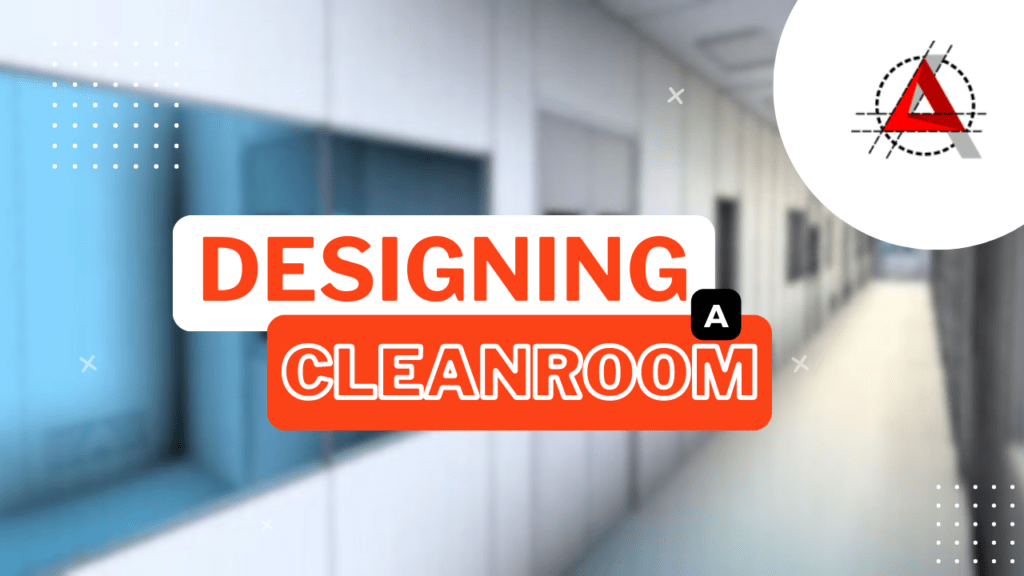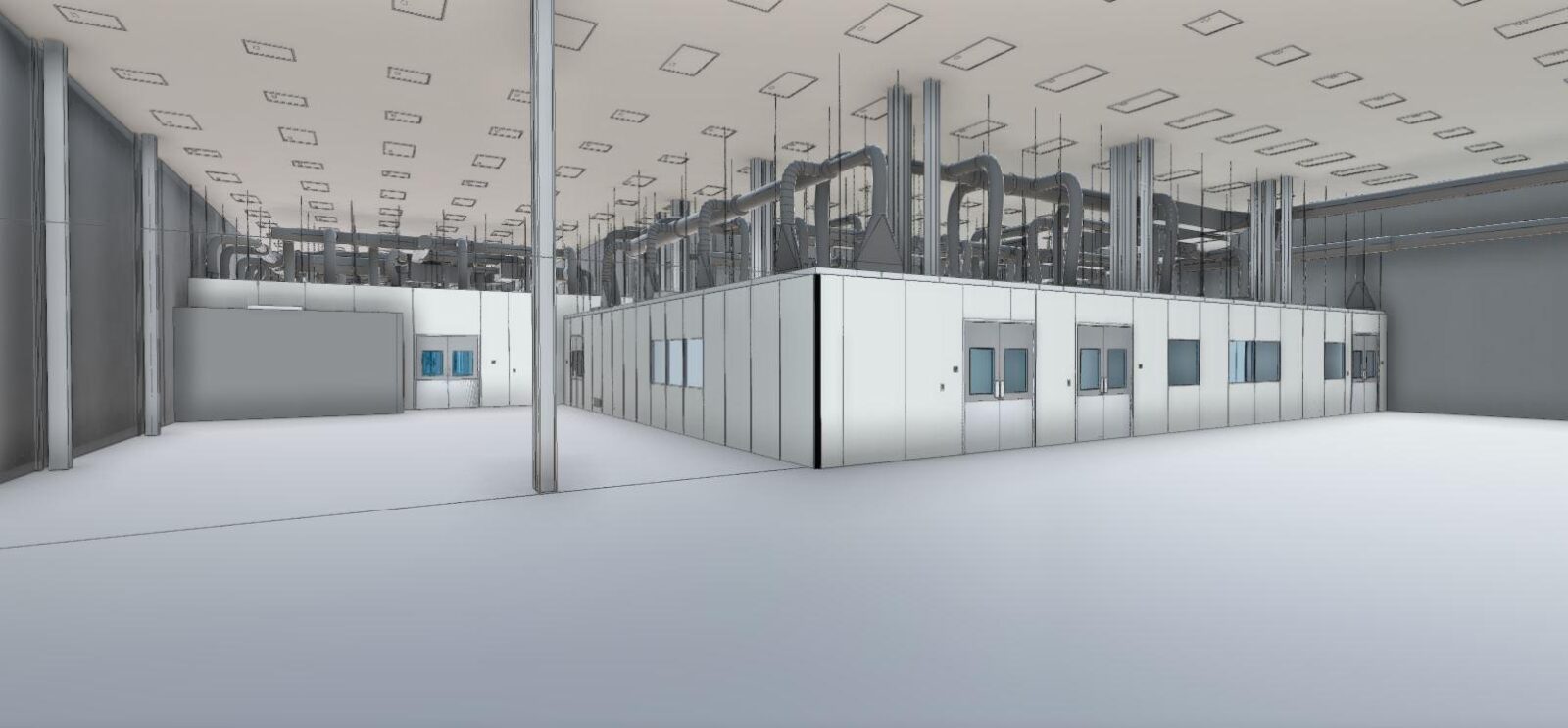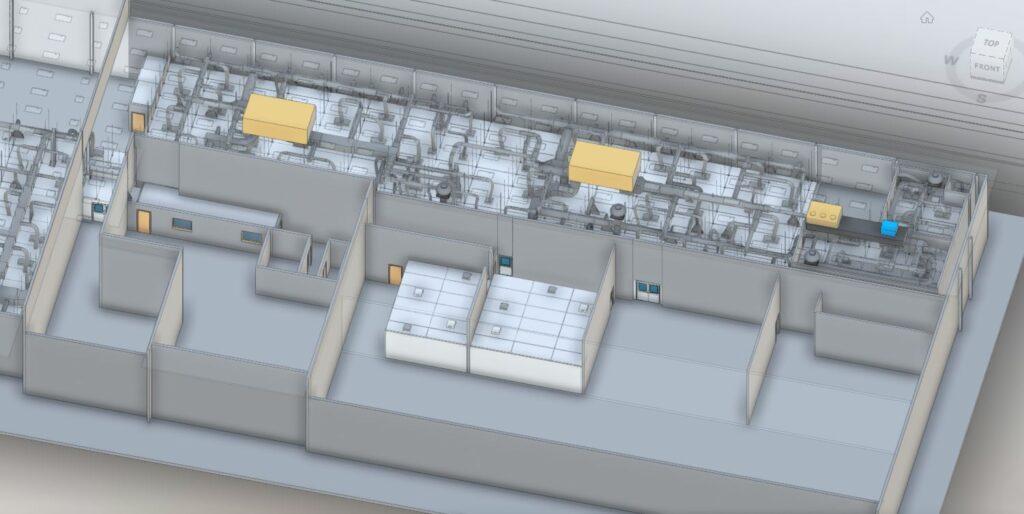Designing a Cleanroom

Designing a cleanroom requires careful consideration of various factors to ensure the highest level of cleanliness and contamination control.
Cleanrooms play a crucial role in industries such as pharmaceuticals, biotechnology, semi-conductors, EV batteries and healthcare, where maintaining a pristine environment is essential for product quality and safety. The design of a cleanroom involves a systematic approach that encompasses various principles to achieve optimal cleanliness levels.
In this blog post, we will explore the key design principles for cleanrooms and their significance in ensuring contamination control.
Things to CONSIDER While Designing a Cleanroom

Classification and Standards:
Cleanrooms are classified based on the permissible particle concentration in the air. Understanding the required cleanliness level is crucial for determining the appropriate design features. Common classification standards include ISO 14644-1 and Federal Standard 209E, which define particle counts for different cleanroom classes.
Environmental Controls:
Temperature, humidity, and air pressure differentials are critical factors in cleanroom design. Maintaining stable environmental conditions helps control the behavior of airborne particles and prevents cross-contamination. HVAC (heating, ventilation, and air conditioning) systems must be designed to provide adequate filtration, efficient air distribution, and appropriate pressurization to minimize particle infiltration.
Airflow Patterns:
The airflow pattern within a cleanroom is designed to control particle movement and prevent their deposition on critical surfaces. Unidirectional airflow, typically achieved through laminar flow systems, directs filtered air in a consistent, linear direction, reducing the risk of particle accumulation. Alternatively, turbulent airflow is used in certain situations where particle removal is a higher priority.
Filtration Systems:
Air filtration is a fundamental aspect of cleanroom design. High-efficiency particulate air (HEPA) filters are commonly used to remove airborne particles of specified sizes. The number and placement of filters depend on the required cleanliness level, airflow patterns, and room size. Regular maintenance and monitoring of filters are essential to ensure optimal performance.
Material Selection:
Cleanroom surfaces, including walls, floors, and furniture, should be made from materials that are easy to clean and minimize particle generation. Smooth, non-porous materials such as stainless steel or uPVC-coated surfaces are commonly used. Seams, joints, and other potential particle traps should be minimized or eliminated to facilitate thorough cleaning.
Contamination Control:
Cleanroom design must incorporate measures to prevent contamination from personnel, equipment, and processes. Entry and exit points should include airlocks or gowning areas to minimize the introduction of outside particles. Proper gowning procedures, including the use of cleanroom garments, gloves, and footwear, are crucial. Equipment and processes that generate particles should be isolated or equipped with suitable containment measures.
Lighting:
Appropriate lighting design is necessary for cleanroom operations. Light fixtures should be easy to clean, free from particle shedding, and designed to minimize shadows. The light intensity and color temperature should be selected to facilitate visual inspections and avoid eye strain.
Things to AVOID While Designing a Cleanroom

When designing a cleanroom, it is crucial to avoid certain factors that can compromise cleanliness and contamination control. Here are key things to avoid:
Poor Planning and Preparation:
Rushing through the design process without proper planning can lead to oversights and mistakes. Insufficient understanding of the required cleanliness level, classification, and industry standards can result in inadequate design parameters.
Inaccurate Cleanroom Classification:
Failing to accurately classify the cleanroom based on particle counts and air quality standards can lead to inappropriate design features and inadequate control of contamination levels.
Improper HVAC System Design:
Designing an undersized or inefficient HVAC system can result in inadequate air changes, inconsistent airflow patterns, and compromised filtration efficiency. Incorrect placement of air supply and return vents can disrupt desired airflow pattern and compromise particle control.
Inadequate Filtration:
Choosing the wrong type or size of filters, or not incorporating an adequate number of filters, can lead to poor air quality within the cleanroom. Neglecting regular filter maintenance and replacement can diminish filtration efficiency.
Poor Airflow Management:
Improper airflow patterns can result in stagnant areas, inconsistent air distribution, and ineffective particle removal. Incorrect placement of vents or insufficient air changes can lead to areas with higher particle concentrations.
Unsuitable Construction Materials:
Selecting materials that are difficult to clean, prone to shedding particles, or not resistant to cleaning agents can introduce contaminants into the cleanroom environment. Avoid using materials that generate particles or have seams and joints that are hard to clean.
Lack of Contamination Control Measures:
Inadequate gowning procedures, insufficient personnel training, and improper equipment segregation can introduce contaminants and compromise cleanliness. Neglecting proper cleaning and disinfection protocols can result in higher levels of contamination.
Neglecting Monitoring and Maintenance:
Failing to establish a comprehensive monitoring and maintenance program can lead to deteriorating cleanroom performance over time. Regular inspections, testing of critical parameters, and proper maintenance of equipment and filtration systems are essential to ensure ongoing cleanliness.
Ignoring Safety Considerations:
Neglecting safety considerations can result in hazards within the cleanroom environment. Failure to implement proper ventilation for chemical handling, ignoring electrical safety measures, or neglecting emergency response plans can compromise safety.
Cleanroom design principles are aimed at achieving and maintaining high levels of cleanliness and contamination control. By considering factors such as classification, environmental controls, airflow patterns, filtration systems, material selection, contamination control measures, and lighting, cleanrooms can effectively mitigate the risk of product contamination and ensure the integrity of critical processes. It is advisable to consult with experienced cleanroom designers, engineers, and professionals and adhere to industry guidelines and best practices throughout the design process.
GET IN TOUCH
Complete the form below to get in touch with our team.
